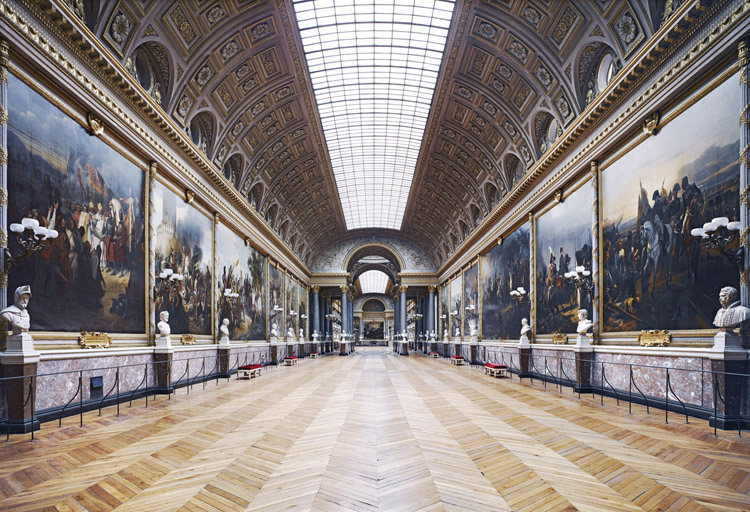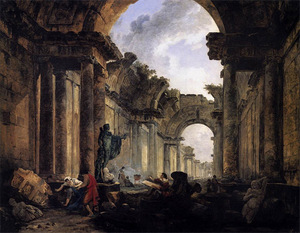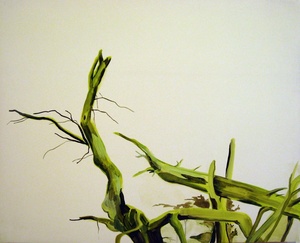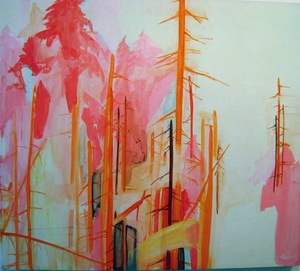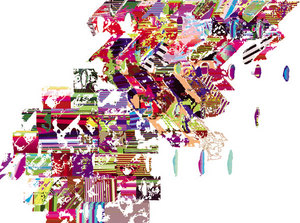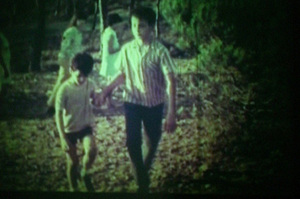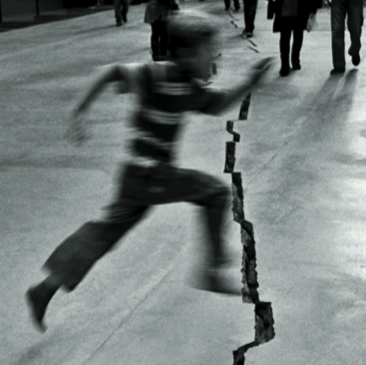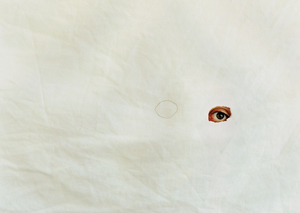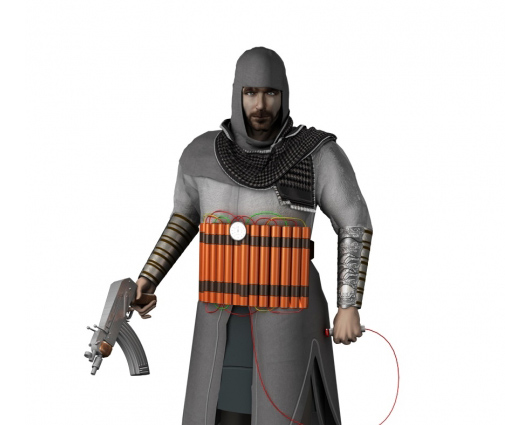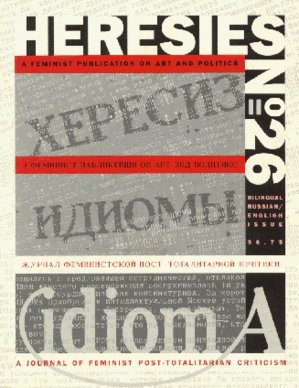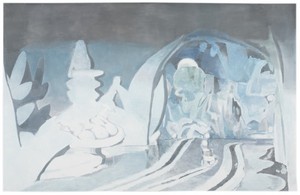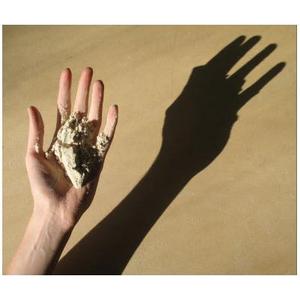This is an archive of the ArtCat Zine, 2007-2009. Please visit our new project, IDIOM.
March 2008
"I hope that these views appear to the spectator as they did to me — with a certain coldness."- Candida Höfer
Candida Höfer: Paris Series
8 March - 5 April 2008
Yvon Lambert Paris - 108 rue Vieille du Temple, Paris
The first thing that strikes the viewer about Candida Höfer's photographs is not their technical perfection, which is indubitable, but their sameness. Nearly all are of large, rectangular rooms, taken from the dead center of one of the shorter sides; in most, the light source is a skylight or a row of windows on the left-hand side. Human beings and their personal effects are nowhere to be found. The places depicted include some of Paris' most sumptuous Baroque interiors, yet the Bibliotheque Mazarine comes to look like Fontainebleau, the Bibliotheque du Senat like Versailles — as if the living details of each were an irrelevant and superficial skin over a fixed, immutable framework. In the accompanying video commentary, Höfer notes that she only shoots inside because "exterior spaces offer too many possibilities." Unsurprising.
For me, the most vivid counterpart and contrast to Höfer's work is that of the French Revolutionary artist Hubert Robert (1733-1808). Like Höfer, Robert emphasizes the grandeur of human-made spaces — yet his paintings lack the stillness and serenity of Höfer's photographs. He paints almost nothing but ruins: the destruction of bridges, the perishing in fire of great buildings, the crumbling hulks of vaguely classical temples. Perhaps his most famous work is an imagined scene of the Grand Gallery of the Louvre in ruins, the vaulted ceiling caved in, a cooking fire where statues once stood. Robert's subjects, both the ruins themselves and the people that inhabit them, are presented in their utmost vulnerability to history; like Robert himself, they live in a world constantly overshadowed by historical rupture, where even the solidity of stone is no guarantee of permanence.
Dear readers, please see our supplementary blog for art fair coverage this week. New content will be going up as the fairs open and progress.
Women in Experimental Film
Co-presented by The Film-makers’s Cooperative and PS1
2pm Saturday 1 March 2008
PS1 - 22-25 Jackson Ave, Long Island City NY
Women Behind the Lens, Panel Discussion
Presented by CineKink
Moderated by Rachel Kramer Bussel
5pm Saturday 1 March 2008
Anthology Film Archives, New York, NY
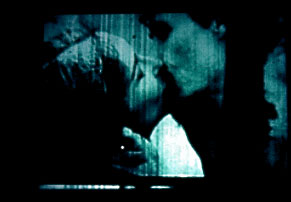
1965, color film in 16mm, 22:00 minutes
Running concurrent to the WACK! Art and the Feminist Revolution exhibition at PS1 and boasting its own set of events, was the less high profile CineKink Film Festival. The festival, whose aim is to continue "the recognition and encouragement of sex-positive and kink-friendly depictions in film and television" — according to the letter of introduction written by CineKink Co-Founder and Director Lisa Vandever — focuses primarily on porn, a topic deplored by many feminists, yet one that resonates deeply with much of the work on display at PS1.
Saturday March 1, 2008, in a moment of programmatic convergence, PS1 in Long Island City screened the works of seven experimental feminist filmmakers followed by a panel discussion; across the river at the Anthology Film Archives, CineKink hosted its pornographic version of the same event, showcasing woman-directed works of pornography followed by a panel discussion with the filmmakers.
The Women in Experimental Film screening at PS1 featured films made by feminist filmmakers Barbara Rubin, Marie Menken, Carolee Schneemann, Barbara Hammer, Marjorie Keller, Peggy Ahwesh and Abigail Child. Of the seven films screened, three films dealt with sexuality and sexual encounters explicitly, and a fourth one focused entirely on the mechanisms of the body.
Barbara Rubin’s Christmas on Earth involved a simultaneous double projection, one larger and the other half its size, superimposed on top of one another. According to an essay by Daniel Belasco published by Art in America, the 29-minute film is the "record of an orgy staged in a New York City apartment in 1963." The larger image consisted primarily of images of female and male genitals, and close up shots of couples making love. The smaller projection showed the participants' entire bodies. Rubin imbued both projections in hues of deep red and purple paint. When creating The Color of Love and Covert Action Is This What You Were Born For? artists Peggy Ahwesh and Abigail Child, respectively, spliced together found footage that consisted of both professional and amateur pornography. In both films, the heavy editing and deterioration of the film upsets the narrative, such that images become surreal and disconnected and cease to read as traditional pornography.
This Wednesday marks the opening of several major New York art fairs. ArtCal Zine will covering several of these, likely with daily content starting Wednesday. We're also announcing today our first international contributor, who will be writing on contemporary art in Paris for the next few months. A review of Candida Höffer's current photo exhibition at Yvon Lambert Paris will be published later this week.
Rice and Beans
Alison Knowles and Charles Curtis
7:30 Tuesday 25 March 2008
Miguel Abreu Gallery - 36 Orchard Street New York, NY
Tomorrow nigt at the Miguel Abreu Gallery, founding Fluxus member Alison Knowles will be presenting Rice and Beans, a new musical performance in collaboration with composer Charles Curtis who will be performing the piece. Alison Knowles writes:
I will do a poem titled Mantra for Jessie (some help in sleeping). It is a juxtaposition of sound and color in a literal narrative poem. In my mind it is a lullaby. I remember Simone Forti my friend in California who says her mother used to read her recipes to put her to sleep. This Mantra appears in a pamphlet put out by the Great Bear series of Something Else Press, 1979. The pamphlet is titled More by Alison Knowles.Charles will play a score I made for him entitled Rice and Beans for Charles Curtis. He will also play a pieces by John Cage and Morton Feldman from the 1950s.
Lentils were eaten from the wild before domestication. They are the oldest bean in existence first found in the Franchthi Caves of Greece in 1,100 B.C. They appeared in the Bronze Age and then India and Ethiopia as well. Beans are the first food associated with the poor. Documents in tablet form with recipes have been discovered, but most recently in a rock crevice on cliffs off the Pacific coast what may be an ancient vestment has appeared. Its origins are completely unknown. It is made of paper melded with muslin containing red lentils, a tangle of cords and black curled marks perhaps some primitive language. Egyptians imagined it was sufficient to eat lentils to enlighten the mind and open the heart, and perhaps as well to make music!
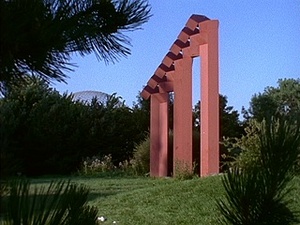
The Blazing World
8pm Tuesday 25 March 2008
Light Industry - 55 33rd Street 3rd Fl., Brooklyn NY
$6
Next Tuesday marks the opening event for Light Industry, Sunset Park's newest venue for experimental film and electronic art. Manifesting initially as a weekly cinema series set to run through spring and summer of 2008, Light Industry is a project founded and developed by curators Thomas Beard and Ed Halter. The two inaugurate the space with a self-reflective program of 16mm films that make parallel movements at utopian ideals and a "search for new ground." The films presented tonight span just about 30 years of work and chart a kind of strategic lexicon for Industry's own development as a supporting institution and platform for moving image art. The Blazing World presents work in this vein that ranges from the phenomenological trailblazing of Nancy Holt and Robert Smithson's Swamp, Michael Robinson's landscape study of former World Fair sites, and a costumed historical reimagining of a 19th century failed upstate utopian project in Michael Gitlin's Bernice.
From the press release: "Light Industry's inaugural event brings together a group of films that ponder the vicissitudes of utopian scheming and the search for new ground. Juxtaposing the heady, exploratory optimism of the Aquarian age with the more sobering observations of contemporary artists, The Blazing World attempts to embrace the complexities inherent in what Light Industry sets forth to support: the ongoing social experiment in community that undergirds moving-image art-making."
Amy Vogel
Larissa Goldston Gallery - 530 W. 25th St, New York NY
29 February - 29 March 2008
On initial viewing of Amy Vogel's “World Go One Way, People Another,” currently on view at Larissa Goldston Gallery, I was greeted with that sense of tranquility that comes from a storied Sunday drive down a meandering country road. Majestically tall old growth trees reach to the heavens; highly saturated harmonizing colors proliferate in multiple cross-hatched water-laden strokes, showcasing a breadth of naturalist access to a jaded urbane existence. But these are not back roads leading to a vacation home for mid-summer. They are inroads to a realm entirely foreign to the numbed city dweller, completely accustomed to the erosion of privacy in daily life.
Throughout Vogel's work, sweeping brushstrokes reveal multi-layered saturations of acrylic color, looking almost watercolor-like in nature. But a pile of logs is not necessarily all that it appears to be. Take Untitled 2008. In this piece, layers of contrasting green give a luminescent glow to a collection of lumber, bringing forth a sheen not unlike the dermis of our Martian counterparts. The logs lie in a disjointed heap, bracing against each other for support. The craggy branches reach out like spindly tentacles, looking for their next victim. It seemed a bit Blair Witch to me: will anyone hear you scream in the woods? I looked closer. Sure enough unseen on a first glance, there, tied to the base of the structure, is a rope knotted into a perfect noose. Gothic sensibility at its finest. Next time one encounters such a trail marker, they may think twice before resting their weary bodies upon its sturdy timber.
Another fascinating object of reference that appears throughout Vogel's craftsmanship is her insertion of mobile homes lying amidst depictions of the rural blue collar of Upstate Michigan. There's certainly no Matthew McConnaugheys (read: celebrities) vacationing in Airstreams here. These are homes of residents that are a recluse's dream come true. A trailer lies at the bottom of a lavender and leafy crimson ravine, a single door leading to open air. A spare tire lies long abandoned next to the aluminum doorway; a protective barbed wire fence lies at the edge of the property. But is this truly a protection from the dangers of nature, or that of outsiders?
Vogel's work aims to romanticize the simplistic, but looking at these images I didn't feel that these were “bucolic settings” by any means. There's an extremely sad, lonesome quality at play here. Somewhere along the way, a connection, has been severed. The residents use the rural setting as an attempt to provide a stable refuge in an increasingly unstable world. But the trees, on several second looks, no longer appear to be majestic pines reaching to the heavens, but perhaps victims of forest fires. They appear singed by leaping flames, their remains standing as skeletal remnants of the dry season.
Throughout Vogel's works the viewer must constantly look downhill towards the focal point of reference. In several of the pieces a curved rail from the highway looks from above at a journey below. The pictures evoke the feeling of being at a zoo, looking at the trapped animals beneath us. The subject is continually at a safe distance — never too close, but yet far enough to succeed in its isolation. The trees continually provide what seems to be protection, but not from the elements, but intruders. Vogel has gifted us with our own VIP invitation inside a world not necessarily interested in otherwise letting us in. An intimately intriguing show, Amy Vogel, “World Go One Way, People Another” is on view through March 29th.Off the Wall at the Jewish Museum
16 March - 27 March
Various times and venues
The Jewish Museum - 1109 Fifth Avenue New York, NY
$museum admission (12)
Last week the Jewish Museum launched Off the Wall: Artists at Work, a two-week series of open studios and ongoing projects in development by eleven artists invited by the museum to participate. From the press release: "the artists in Off the Wall are part of a new generation that is engaged in alternative Jewish communities but may not be affiliated with synagogues or mainstream organizations. As but one aspect of their multiple identities, Jewishness, when it figures in their art, is playful, performative, and wired for the internet. Their work may be ironic and draw on pop culture or take inspiration from liturgical and spiritual sources."
A week of events remain as part of Off The Wall, which will feature a performance and talk with LoVid (Tali Hinkis and Kyle Lapidus) tomorrow night at 7:30. LoVid has exhibited and preformed internationally, often presenting manifestations of their singular analog poetics across media, implicit in our daily lives but made invisible by the sterility of the rapid cyclical nature of technological development and obsolescence. "For Off the Wall, LoVid will develop Retzuot, an interdisciplinary project inspired by tefillin (leather straps and boxes containing parchment scrolls inscribed with biblical verses) and tallitot (prayer shawls). Retzuot will feature handmade hardware, video-generating sculptural synthesizers, hand-sewn knotted patchworks, and a media performance featuring live abstract video and sound. These interactive and wearable sculptural instruments offer new perspectives on the performative aspects of ritual, the potential for creativity and spirituality in technology, and the relationship between abstract audiovisuals and language-based prayer."
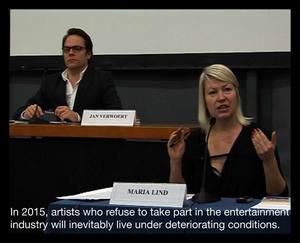
A Crime Against Art
7:30pm Friday 21 March 2008
New Museum - 235 Bowery, New York NY
$8
In February 2007, artist Anton Vidokle and curator Tirdad Zolghadr staged a kind of theatrical mock trial at the ARCO Fair in Madrid. Working in the legacy of similar efforts of the 20s and 30s conducted by André Breton and other continental surrealists, Vidokle and Zolghadr stood accused of a vaporous charge that was to manifest only as the proceedings went on in front of a jury of the two's friends and peers, many of which were also involved in Vidokle's unitednationsplaza art academy as exhibition happening that year in parallel meanwhile in Berlin. The Madrid Trial was later adapted as a film by Hila Peleg — who is curating Manifesta 7 this year along with Anselm Franke, Adam Budak, and the Raqs Media Collective — with a slightly adjusted cast of characters and the title of A Crime Against Art. In the film, we see an international cast of critics, theorists, curators, and artists discuss the future of participation in contemporary art, the collusion of artists with the "new bourgeois" class, the softening critical agency in contemporary art practice and discourse, and the instrumentalization of art and institutions into larger matrices of affirmative culture. The film, produced by unitednationsplazastudios and shown internationally, enjoys its New York premier this Friday at the New Museum.
Akram Zaatari
Modern Mondays
7pm Monday 17 March 2008
MoMA - 11 West 53 Street, New York NY
$10
Artist and curator Akram Zaatari presents his work tonight as part of Asian Contemporary Art Week at MoMA's Modern Mondays lecture series. Zaatari's work often takes experimental documentary approaches to the presentation and rethinking of significant historical narratives, often from his native Beirut. He is also the founding member of The Arab Image Foundation, whose purpose is to "locate, collect, preserve, interpret and present the photographic heritage and visual culture of the Middle East and North Africa from the early 19th century to the present." In Video in Five Movements (2006), from which a still image is reproduced above, Zaatari presents the Super 8 home movies of photographer Hashem el Madani and showcases how the author, using the filmmaking apparatus as a tool to create personal records for memory, directs and represents himself and his subjects in the 60s landscapes of cities across Lebanon and Egypt.
After the Ends and Before the Beginning: Yet Another 24 Hour Cold War Slumber Party (1959–1989)
6pm Saturday 15 March 15 – 6pm Sunday 16 March 2008
Whitney Museum of American Art - 945 Madison Ave New York, NY
$museum admission (15)
Tomorrow afternoon at the Whitney artist Walead Beshty presents After the Ends and Before the Beginnings, a work consisting of a 24 hour film program Behsty has organized to start on Saturay and rung through sunday. The piece is a continuation to Beshty's earlier work 24 Hour Armageddon, presented in LA in 2006 which also featured a day's long screening of a group of apocalyptic films showcasing different approached to the representation of the theme across several generations of filmmakers. This time around Beshty will present two simultaneous film programs occuring in adjacant rooms. One program will fixate on "the end" or, apocalypse, while the other on "the beginning" or young revolutionaries.
Media Art in the Age of Transgenics, Cloning, and Genomics
New Silent
7:30pm Friday 14 March 2008
New Museum - 235 Bowery, New York NY
$8
LEFT FORUM 2008: Cracks in the Edifice
Various times
Friday 14 March - Sunday 16 March 2008
The Cooper Union - 7 E. 7 St, New York NY
$varies
Rhizome director Lauren Cornell has organized a new series of events this year on art and technology at the New Museum titled The New Silent. The series continues this month with a panel discussion put together by we-make-money-not-art's Regine Debatty, featuring a group of artists working with biotechnology: Caitlin Berrigan, Adam Zaretsky, Brandon Ballengee, and Kathy High. The relationship between science, engineering, and the retention and affirmation of state power is a deeply intricate narrative, and an artist's role in such a narrative can have equally resonant and provocative political implications. We need not think further back in recent memory than the story of Steve Kurtz and the Critical Art Ensamble, targeted by the Joint Terrorism Task Force in a May 2004 raid on the SUNY Buffalo professor and long-established artist's home in which much of his work, personal and professional documents, and electronic and lab equipment was seized. Most of the equipment taken was in fact commercially available science equipment, about $256 worth of harmless bacteria, and several constituting pieces of art works that had been displayed safely in international venues for years prior. All of the materials seized were legal and determined by the New York State Commissioner of Public Health to pose no threat to public health or safety. Yet Kurtz was targeted by the FBI in 2004 after local cops, responding to a 911 call Kurtz made after his wife had suffered a heart attack, became suspicious by the presence of various pieces of scientific equipment in the couple's home. In the case of Kurtz, the widely visible artist was targeted either out of a willed ignorance on the part of the local and federal government or as a strategic and symbolic "pressure point" to a network of activist-artists and the supporting community infrastructure — it's hard to tell which, if such a distinction even matters anymore in the surrealist choreography of post-PATRIOT Act law enforcement.
Also this weekend is Cracks in the Edifice, this year's annual Left Forum hosted at the Cooper Union from Friday to Sunday. Dozens of panels and talks are scheduled to happen throughout the weekend with an impressive list of participants including Naomi Klein, Jeremy Scahill, Tariq Ali, Naomi Wolff, Mahmood Mamdani, the Billionaires for Bush, and many more. Just a sampling of the weekend's panel offerings will provide a sufficient survey of the scope and interest of Left Forum events; panels scheduled will include those on legacy of the the 60s black power movement, leftist American evaluations of Hugo Chavez, Marxism and feminism in contemporary China, homelessness and resistance in New York City, political violence in Darfur, sports and the culture wars, and many more.
31 under 31
Curated by Lumi Tan and Jonathan Feinstein
3rd Ward - 195 Morgan Ave Brooklyn NY
1 March - 28 March 2008
If we need a month to commemorate the achievements of women across cultures and generations, then it’s only fitting that an exhibition should sometimes fall under a thematic conception as loose as this month’s dedication. 31 Under 31, currently on view at 3rd Ward, is an exhibition that brings thirty-one women under the age of thirty-one to show one photograph each. Though a vast and expansive criteria and an equally vague thematic structure, curators Lumi Tan and Jonathan Feinstein have selected thirty-one impressive and striking photographs that proudly display the talent and astute vision of thirty-one very different young women. The parameters of sex and age have nothing to do with artistic skill, personal taste or creative vision and yet, when given these basic guidelines under which an artist can showcase her work, the end result is clearly multifarious and wildly eclectic, which lends itself well for photographic interpretations. Because an age group cannot reflect an aesthetic predisposition and because age can only speak about the number of years passed, all the other personal motivations for every photograph presented are as different from the next as each photographer’s background and personal history.
The Last Slide Projector
7pm and 8:30pm Thursday 13 March 2008
Anthology Film Archives - 32 Second Ave, New York NY
$8
This Thursday the Anthology Film Archives will present The Last Slide Projector, a video by Paige Sarlin. The work is an hour long experimental documentary narrating the final production of Eastman-Kodak's Carousel slide projector, an imaging apparatus with a unique relationship to the personal memory industry, corporate culture, and the cinema. "Beginning with Kodak’s announcement of their decision to cease production, and ending with a home-movie-style digital video that documents the assembly of the last projector in Rochester, NY, the film chronicles the stories of people who were intimately involved with the production and use of the projector. The film also considers the Carousel projector’s role in the story of the Eastman Kodak company and how recent changes in the company reflect broader shifts in American manufacturing." The filmmaker will be in person to present her work and answer questions afterwards.
Iraqi American video artist Wafaa Bilal's recent exhibition at Rensselaer Polytechnic Institute in Troy, NY, Virtual Jihadi, was closed by the University's administration a day after its initial opening on 5 March 2008. A conservative commentator on the state payroll called for protests to Bilal's exhibition before its opening in the pages of the Troy Record, citing a work based on an incendiary video game exhibited in a university art gallery. The offending work, a video in which Bilal depicts himself as an Iraqi civilian radicalized by his brother's death and driven to join an Al-Qaidea in Iraq cell as a suicide bomber, positions the artist's character in an interactive video game called The Night of Bush Capturing, an Islamist détournement of Hunt for Saddam, an American first person shooter in which a protagonist U.S. soldier makes his way through a virtual world populated by stereotypical Iraqi men in an Odyssean journey to "hunt" and kill former Iraqi president Saddam Hussein. RPI cited concerns that Balil's work may make use of university resources to "provide a platform for what may be a product of a terrorist organization or which suggests violence directed toward the president of the United States and his family." Following the censoring of the exhibition at the university art gallery, Balil seems to have been blacklisted from campus and denied access to university buidlings, despite being RPI's current artist in residence and being assured by the university president that he remains a welcome member of the community regardless of the recent controversy. Balil describes this and more in a recent video interview.
If the chauvinism of the Hunt for Saddam seems underrepresented here, it's likely because it is; reading about it today calls to mind similar popular jingoistic interactive Internet memes and flash animations authored and circulated shortly after September 11 and following the path to war in Iraq, in which players were given a chance to symbolically drop bombs and mark the bodies and homes of an endlessly regenerating population of animated stand-ins for an abstracted and heavily racialized enemy. As Brian Holmes writes, Balil's recent work has been concerned primarily with suggesting potential strategies for representation and sympathy with the Iraqi civilian, a figure often ignored in the popular media depiction of Iraq as a Manichaean arena of pro-Western freedom-fighters and regressive Islamic militants. In a war waged on all fronts — despite President Bush's assurances that sacrifices of the civilian population in this country at least need not be asked — the symbolic plays an ever important role to those geographically and emotionally alienated from the material realities of war.
Bilal's video, Virtual Jihadi, will be on view at the Sanctuary for Independent Media in Troy through 4 April 2008. You can see another one of Bilal's recent web performance projects here.
Heretics
Preview and discussion
4pm Sunday 9 March 2008
PS1 Contemporary Art Center - 22-25 Jackson Ave, Long Island City NY
$museum admission (5)
This Sunday at PS1 artist Joan Braderman will present clips of Heretics an experimental feature length documentary in progress on the Women's Rights movement of the 70s with a particular focus on New York and the Heresies Collective. Braderman, known for an impressive oeuvre of discursive art videos of media and culture critique was a cofounder, along with a cast of other artists and intellectuals (including Lucy Lippard, Joan Snyder, Miriam Shapiro and others) of Heresies, a feminist journal of art and politics in 1977 which was in operation through 1992. Following the screening, Braderman will take place on a panel discussion moderated by Judith K. Brodsky with artists Harmony Hammond, Joan Snyder, and Cecilia Vicuña.
Forever the Management of Magic
Luc Tuymans
David Zwirner - 525 W 19 St, New York NY
14 February - 22 March 2008
W. G. Sebald begins one of his essays with a quote from Michel Foucault:
We must therefore listen attentively to every whisper of the world, trying to detect the images that have never made their way into poetry, the phantasms that have never reached a waking state. No doubt this is an impossible task in two senses; first because it would force us to reconstitute the dust of those actual sufferings and foolish words that nothing preserves in time; second, and above all, because those sufferings and words exist only in the act of separation.
Sebald, a German writer who came of age in the trauma of post-war Germany, produced works that meditated upon memory, both collective and personal. His seminal work, Austerlitz, follows its principle character, adopted as an infant, as he travels Europe, examining its Architectural monuments and hoping to uncover the elusive mystery of his parentage. Through a blend of fact, fiction, philosophical insight, and photographic records, Sebald weaves a melancholy tale that ultimately traces the horror of the holocaust through records and the very architecture marking the land like monuments of the dead.
Luc Tuymans, a painter of moribund and starkly hued images, also believes that the objects of history are never free of the haunting traces of memory. His paintings, like Sebald’s perambulatory tale, raise the holographic insistence of a reality that surrounds the comfortable knowable images of our world with the ghosts that once imbued them with life and even death. To appropriate a phrase of Balzac’s, they are "a perfect image of the past, a symbol of something great now destroyed, a poem."
That is not to say that Tuymans focus is never in the present. If anything, his work is arguably opportunist. His last show at David Zwirner in 2005 was occupied by an examination of contemporary American power. The seminal images of the show, one pursed lip portrait of Secretary of State Condoleezza Rice and another of a demolished building, both literally and figuratively addressed the stresses of American power post 9/11.
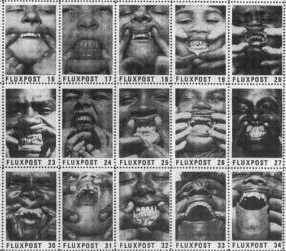
FLUXCONCERT 20080305
8pm Wednesday 5 March 2008
47 Beaver (at Park St), Brooklyn NY
$8
Artist Perry Garvin has organized a performance of 26 historical Fluxus event scores tonight at 47 Beaver in Brooklyn. The evening is organized to "breathe new life into these historic scripts by weaving together an evening of absurdism and humor." FLUXCONCERT will feature a cast of seven performing texts written by Fluxus members on the periphery as well as the center of the particular historic moment. In many ways Fluxus was an art of small things: George Maciunas'sFluxpost (Smiles) (1977-78) for example, a collection of tiny prints of on perforated postage stamp paper, is at once an economic and vernacular work that rides on the back of a populist media form and creates a kind of agitational anti-advertising, presenting forced smiling faces that seem to belie a lack of access to good dentistry and hygenic practice rather than the usual projected pleasure of each photo's subject. Many Fluxus films are conversely far more singular in their conception, if visually similar to Maciunas' aesthetic of repetition, seriality, close up and incomplete views. Flux Films often feature a single subject or filmic effect carried out for each film's duration. Nam June Paik's Zen for Film (1962), to take one obvious example, is composed of a few title frames and a reel of white leader which illuminates the theater space when projected while occasionally flickering with the passing bits of dust and other signs of wear along with the film through the projector's gate. The Fluxus Performance Workbook, which contains the scripts for many of tonight's performances is constituted of simple, paragraph long instructions for acoustic actions intended to be carried out (often by a single performer) for a group of people. Robert Bozzi's A Piece for Chieko Shiomi has a performer hold and drop various objects, with mind to each object's equally varying acoustic consequence. Lee Heflin's Fall, meanwhile, instructs the performer simply to "throw things that are difficult to throw because of their light weight."
Reservations are recommended.
Kori Newkirk: 1997 - 2007
The Studio Museum in Harlem - 144 W. 125 St, New York NY
14 November - 9 March 2008
At Kori Newkirk's retrospective at the Studio Museum in Harlem, there is a clever neon sign installed. It reads "TAKE WHAT YOU CAN."
Newkirk is keenly aware that "YOU" will deeply shape how you approach his work. Beyond the individual subjectivity of each viewer, it is a plain fact that black art intrinsically means something very different to the African Diaspora than it does to any other group. To approach any work that hangs at the Studio Museum in Harlem is to enter into the land of double meanings. Your commentator is certainly not going to claim the transcendent authority to see this art through both black and white eyes, or alternatively that it can be viewed in a color blind manner. The very act of visiting Harlem and walking through the Studio Museum's door engages the viewer in the ongoing question of race and how art explores it. To pretend otherwise would run the dangerous risk of decontextualizing the work. Newkirk tells the viewer to take what you can, knowing that everyone will take away something different.
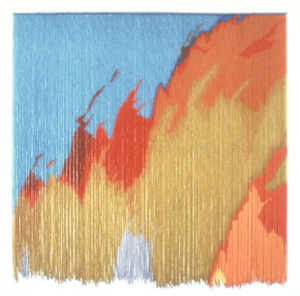
The work is not, however, just a generic image of fire. Beneath this stunning representation, there is an image of tragedy: Newkirk seeks to invoke the fires of the 90s race riots in Los Angeles. The fact that this might not be immediately apparent when looking at the work is crucial. It emphasizes the extent to which dark episodes in the history of American racism have not been encoded into mainstream history.
In other bead curtains installed in the hall, Newkirk also harnesses the inherent pointillism of a technique of tightly aligning rows and columns of pony beads. For example one recent curtain depicts the skyline of New York with the Brooklyn Bridge in view. In this image the space between beads reads like fog over the water. The blocky composition of the half illuminated buildings and water created by the beads also appears like a heavily pixilated digital image. On the formal level, such play with focus and sharpness may have been pioneered by Richter in his fuzzy photograph series, but there is a deeper reason why Newkirk wishes to obscure this iconic view of New York’s skyline.
The Size of Thoughts
Julia Weist
295 10th Avenue
7 February - 4 March 2008
Our bodies are defined by certain physical perimeters and constraints. While we can't transgress the material possibilities which constitute those bodies, we often challenge and explore their potential for the sake of pleasure, pain, or even pain for pleasure. When art asks us to position our bodies, that irrefutable mound of mass that we can't shake or change too drastically, in relation to the work at hand, the arising conflict is immediate because no inanimate object could ever be a distinct source of comparable measure to any of our basic faculties. Julia Weist's exhibition, The Size of Thoughts, presents a physical barrier to the work, specifically the glass window that blocks our immediate path to the objects on view. Weist's exhibition at 295 Tenth Avenue, a site curated monthly by Lumi Tan, presents sculptures made of discarded and reconfigured paperbacks and asks us to size up our own material presence in relation to these once narratively inscribed objects (books and images) that are here sculptures intended for distanced inspection and investigation. In this work, thoughts become material objects as the once immaterial narrative form of the novel is turned into shredded pieces of repurposed wood, the basic foundation for the paper upon which these words were printed is reduced to its constituting stuff. The piece, titled Lumber, made from ripped margins of discarded romance novels, is a new take on MDF, an industrial wood reborn as M.D.F, "Made of Discarded Fantasies."
Spectators can only view the exhibition like a peep show in which discarded information becomes the striptease of words and ideas. Weist creates, in effect, naked bodies made of objects that she presents in their physical wholeness for our bodies to size up. Next to the MDF of the M.D.F. we find Weist's other project: a novel about a sexy librarian whose sexual escapades get her two STDs and a novella worth of torrid adventures. The peepshow of the 295 window doesn't reveal any more than the gaze can capture (although you can buy the book and read the narrative yourself). Instead, Weist installs the book in a real MDF frame, placed next to another romance novel — the ultimate of disposable literary genres — this one written by Weist's deceased step-grandmother two years prior. The objects presented force the viewer to face the presence of the stories enclosed in a physical case that precludes any ability to delve into the ideas they would otherwise suggest or communicate. In Weist's work, thoughts can only occupy the physical size of the source material on which they were originally inscribed, the substance that makes their material composition: whether it's a novel about romance or hot sex, or the wood used to frame the book's cover turned it into something we can see but can't touch.ZINE
HOME
TIPS / COMMENTS
CATEGORIES
CONTRIBUTORS
- Greg Afinogenov
- B. Blagojevic
- Adda Birnir
- Susannah Edelbaum
- Julie Fishkin
- Paddy Johnson
- Jessica Loudis
- Christopher Reiger
- Andrew Robinson
- Peter J. Russo
- Blythe Sheldon
- S.C.Squibb
- Hrag Vartanian

